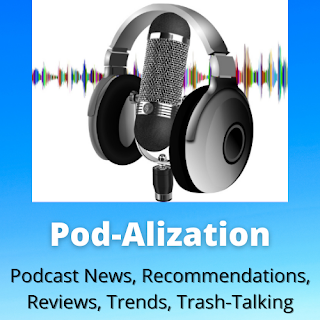How Freakonomics Grows Its Podcast Brand and Network -- The Right Way
There are two types of networks in TV and podcasting. There are TV networks that are created and defined by one niche topic. For example, the ID Channel focuses exclusively on true-crime stories. Murders, double murders, unsolved murders, and crimes of passion or greed. Then there are those TV networks where the programming is eclectic. Anything that will attract viewers and sell ad time can be on these networks. CBS, the broadcast channel, airs programs as diverse as legacy news program, 60 Minutes, reality trash like Big Brother, and multiple NCIS and FBI dramas.
In podcasting, the corollary is networks like Spotify, iHeart, and Wondery that release podcasts on a variety of subjects and tone. Then you have a few podcast networks that develop a brand. Their focus, tone, and thought pattern remain consistent throughout its programming lineup.
My best example is the Freakonomics Podcast Network, which produces Freakonomics Radio, No Stupid Questions, People I (Mostly) Admire, Freakonomics M.D., and their latest show, The Economics Of Everyday Things.
All of these shows offer listeners a thoughtful and questioning tone about conventional wisdom and ideas we take for granted. Their shows are inquisitive, challenge the status quo, ask more questions than provide answers, and adopt a more restrained yet still curious and speculative attitude.
When you listen to a Freakonomics podcast, you know what your ears will be receiving. The subject can vary -- from talking trees to road signs that are useless -- but the treatment is always similar. Data is retrieved, assumptions are questioned, and myths are often exposed. It's a successful, vibrant formula that the network employs with skill and style.
The Freakonomics Podcast Network also has a strong maternal instinct. When the network develops and then releases a new show, it often debuts the show on the Mother Ship, Freakonomics Radio, for a few episodes so that that large, loyal audience receives a generous pour of new content on a new show. It is a simple yet effective strategy for new podcast development.
Freakonomics is running that game plan now. Its latest show, The Economics Of Everyday Things, has been running on Freakonomics Radio as well as its own podcast feed. It's a successful strategy.
By contrast, Spotify was releasing shows the last two years as if these new shows were orphans from the day they were released. No surprise that Spotify has canceled so many shows.
The latest episodes of The Economics Of Everyday Things have looked at Girl Scout Cookies and the 1979 mega-hit, My Sharona, by The Knack. Check out the show here.
Modern Love podcast returns for a new season
When Huey Lewis and The News recorded and released the Billboard Top Ten hit record "The Power Of Love" in 1985, the group spoke truth to power. Consider what's happened to the Modern Love column in The New York Times. For 17 years, the newspaper column has given readers a glimpse into the complicated love lives of real people. Since its launch, the column has evolved into a TV show, several books and, of course, a podcast.
Modern Love is back for the new year with a new season. For the next 10 weeks, we’ll be releasing 10 new episodes exploring the complicated love lives of real people through conversation and storytelling.
In the season premiere, “I Promised God It Was the Last Time,” host Anna Martin introduces us to Sara Glass, who wrote an essay about her first love with a girl from high school.
Growing up in an ultra-Orthodox Hasidic community, Sara Glass was used to following strict rules — including what to wear, when to get married and whom to love. But after two marriages to men, and years of working as a psychologist who strove to create a safe space for her clients, Sara was done hiding that she was gay. Today, Sara shares her experience of leaving the Hasidic community and finally embracing her true self.
Host Anna Martin, who also produces the show, is an empathetic interviewer who is a nice fit for the podcast. Each week, Martin brings listeners the most popular stories from the column, along with insightful conversations with the authors, and documentary segments exploring the complex world of love and relationships.
Listen to the episode here.
How a Podcast can help your Business
Recently, Golden Goose Creative published an article about how developing and releasing a podcast can help your business. Yes, I know that's not a revelation, and large companies like Duolingo, GE, and Starbucks have podcasts. But Golden Goose's point was that any-size business can start and maintain a successful podcast that helps the bottom line in a variety of ways.
There is a multitude of reasons why people begin podcasting. But for many, a podcast is a way to utilize podcasting for business, specifically, an addition to their own business. It is there to help bring new leverage and presence to their brand or their services/products.
Depending on your goals, your budget, and how much time you can put in, a podcast could be a great option for you, read our blog on that here. You may still be on the fence about if it’s beneficial for your own business to start a podcast. Let’s find out!
It can help drive more traffic to your business (if done right). Now, just having a podcast doesn’t mean all of a sudden your business is going to have new traffic. It may, but you are going to need to point people from your podcast to your business for them to know where to go next.

Comments
Post a Comment
Thank You for your input and feedback. If you requested a response, we will do so as soon as possible.